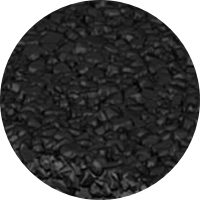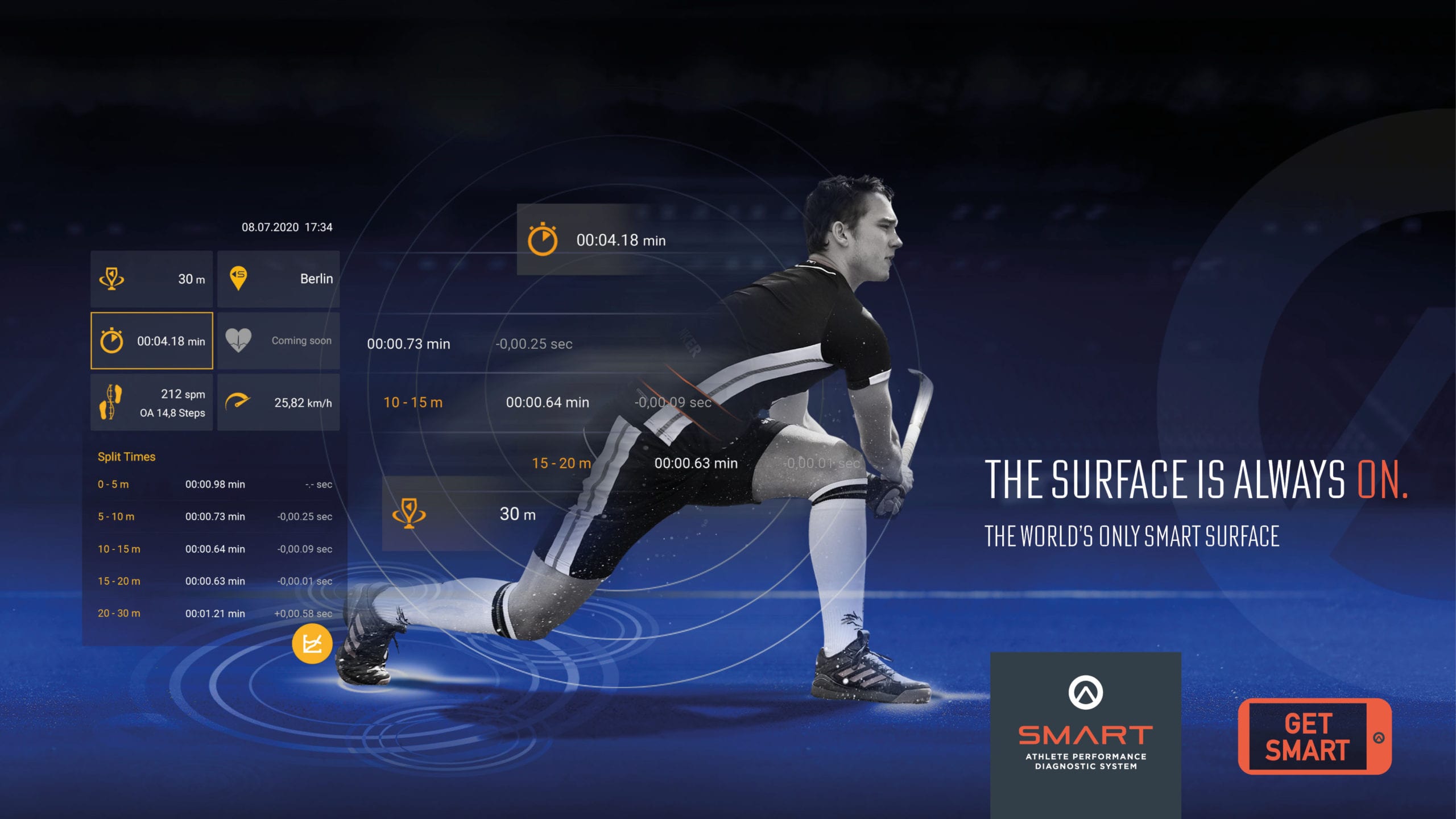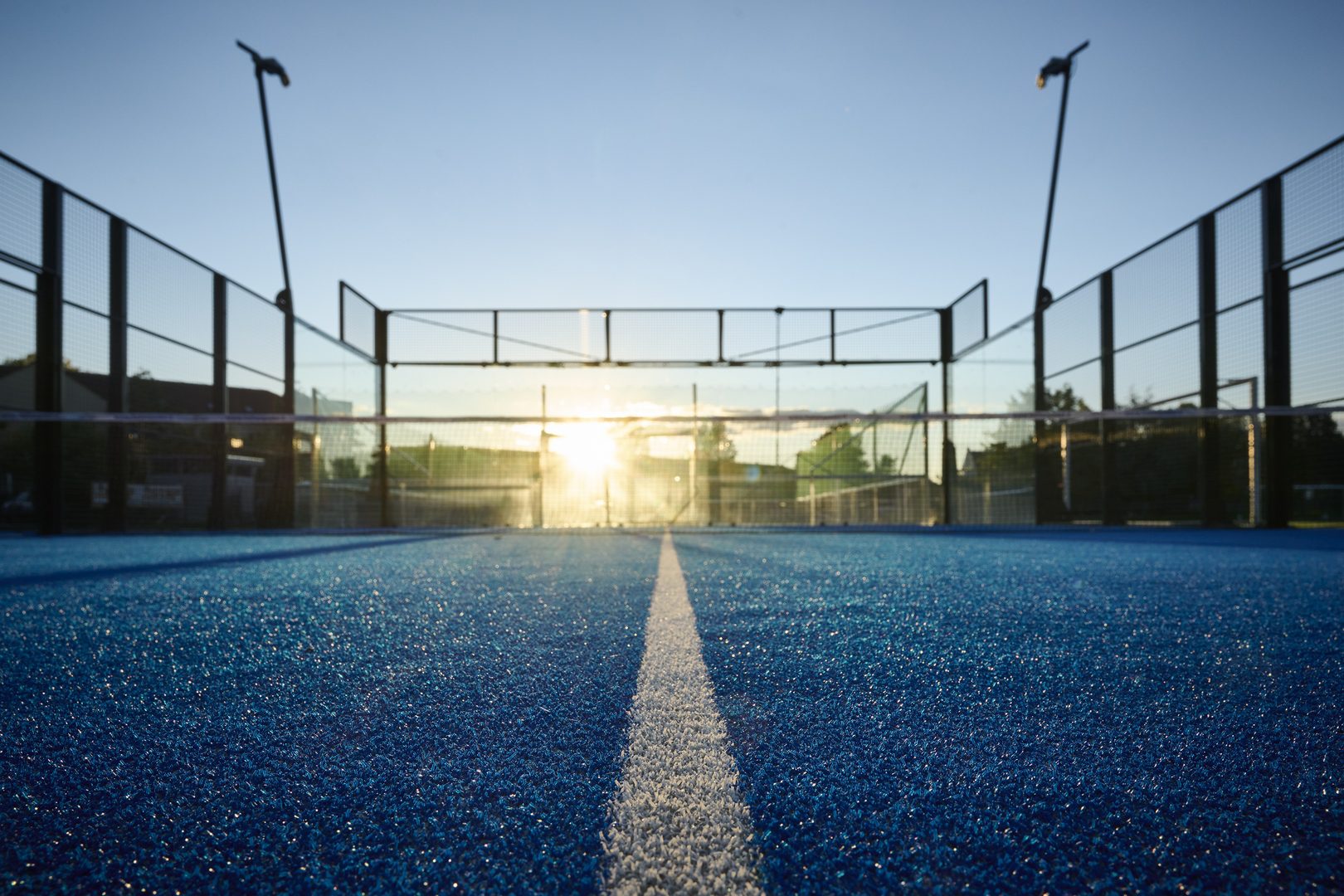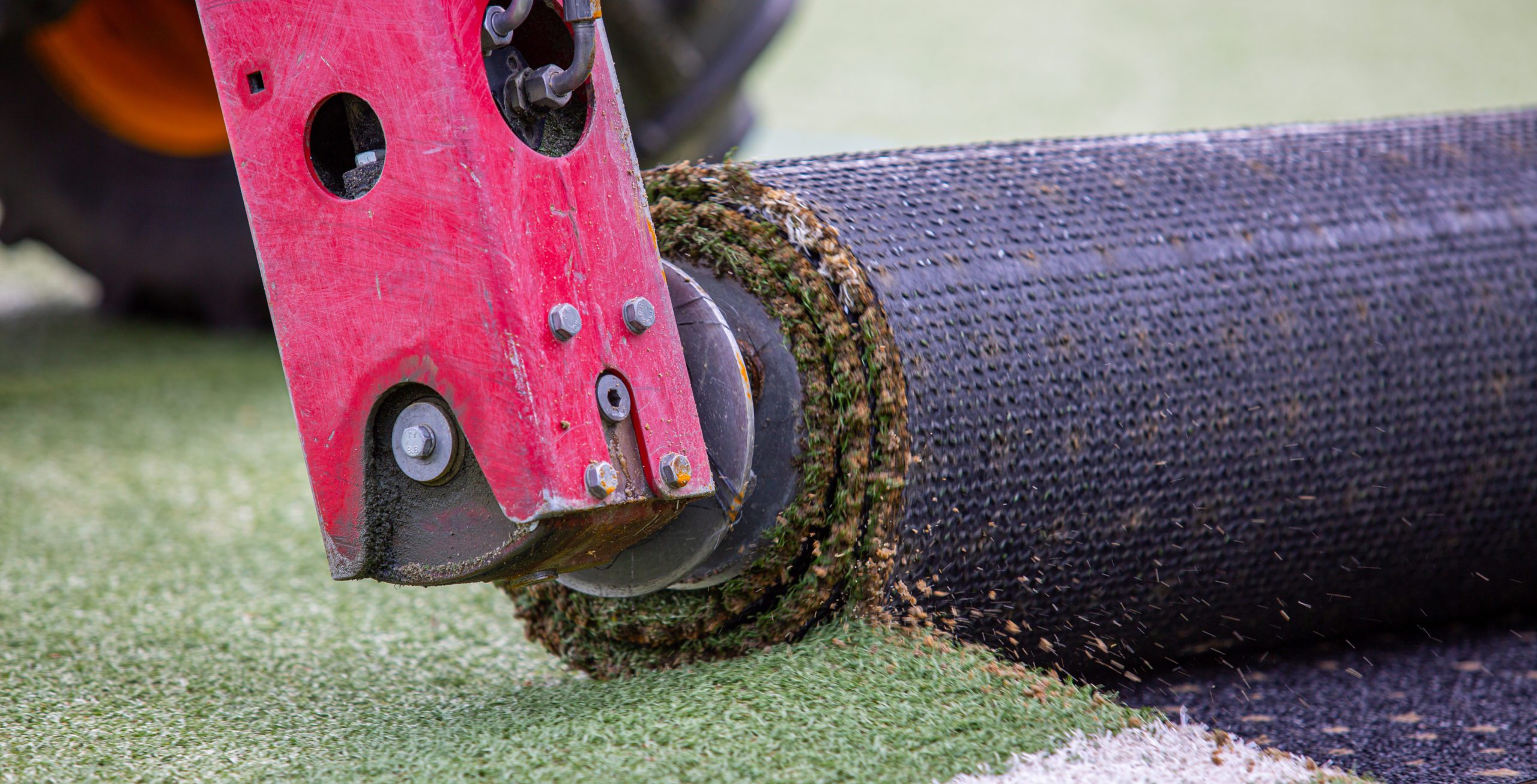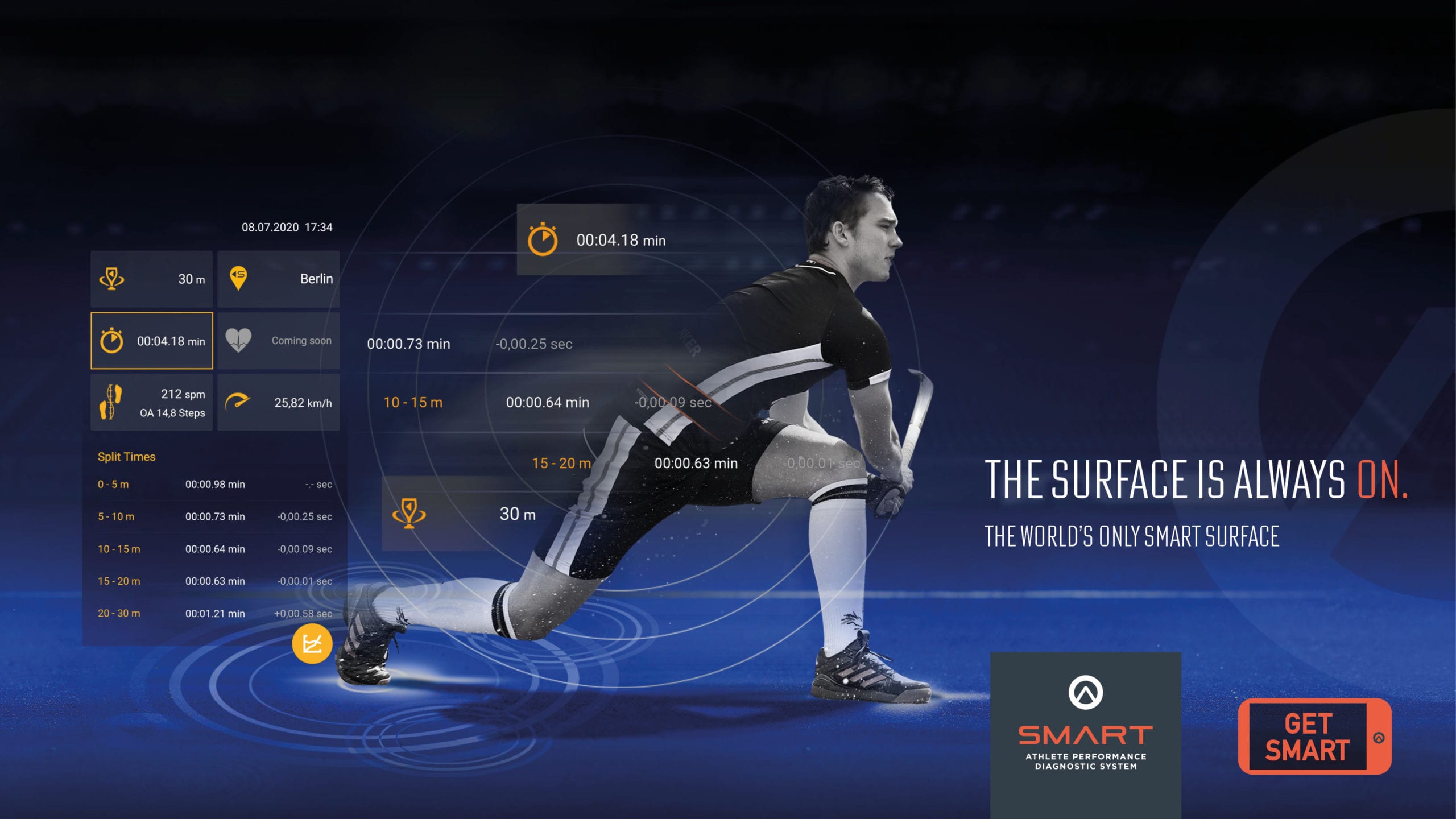‘Citius, altius, fortius’, or ‘faster, higher, stronger’ in English, is the motto of the modern Olympic Games, first quoted officially in Paris in 1924. Just like the Olympic ideal, the hunt for sporting achievements and records is still relatively young, arising – thanks to modern technology – with industrialisation. It is only possible to organise competitions as we know them today with stopwatches, photoelectric sensors, video analysis and highly specialised sports floors and equipment. The TECHNOSEUM Mannheim demonstrates the fascinating history of sport in the special exhibition ‘READY? GO! The History of Sport & Technology’ from 8 November 2018 to 10 June 2019. The exhibition concept focuses on the exciting interrelations between sport, technology and society – from its beginning in the 19th century to the present day. With four exhibits on display at once, Polytan presents highly specialised sports floors from the present day made from artificial grass and plastic at the Technology Museum – without them, today’s sports facilities for football, hockey, tennis and athletics would be unthinkable.
What is on show? The exhibition in Mannheim at a glance
The special exhibition at the Mannheim Museum stages the history(s) and technology(s) of sport in six chapters: from the development of modern sports (1) to the athletic body (2), sports equipment technology (3), performance measurement (4) and spectator sports (5) to sports trends and trend sports (6).
Both modern and historical exhibits are shown across a 800-square-metre space. For example, a vaulting horse complete with head and tail from the early 19th century can be admired, which served as preparation for cavalry war and exemplifies the national-patriotic roots of gymnastics.
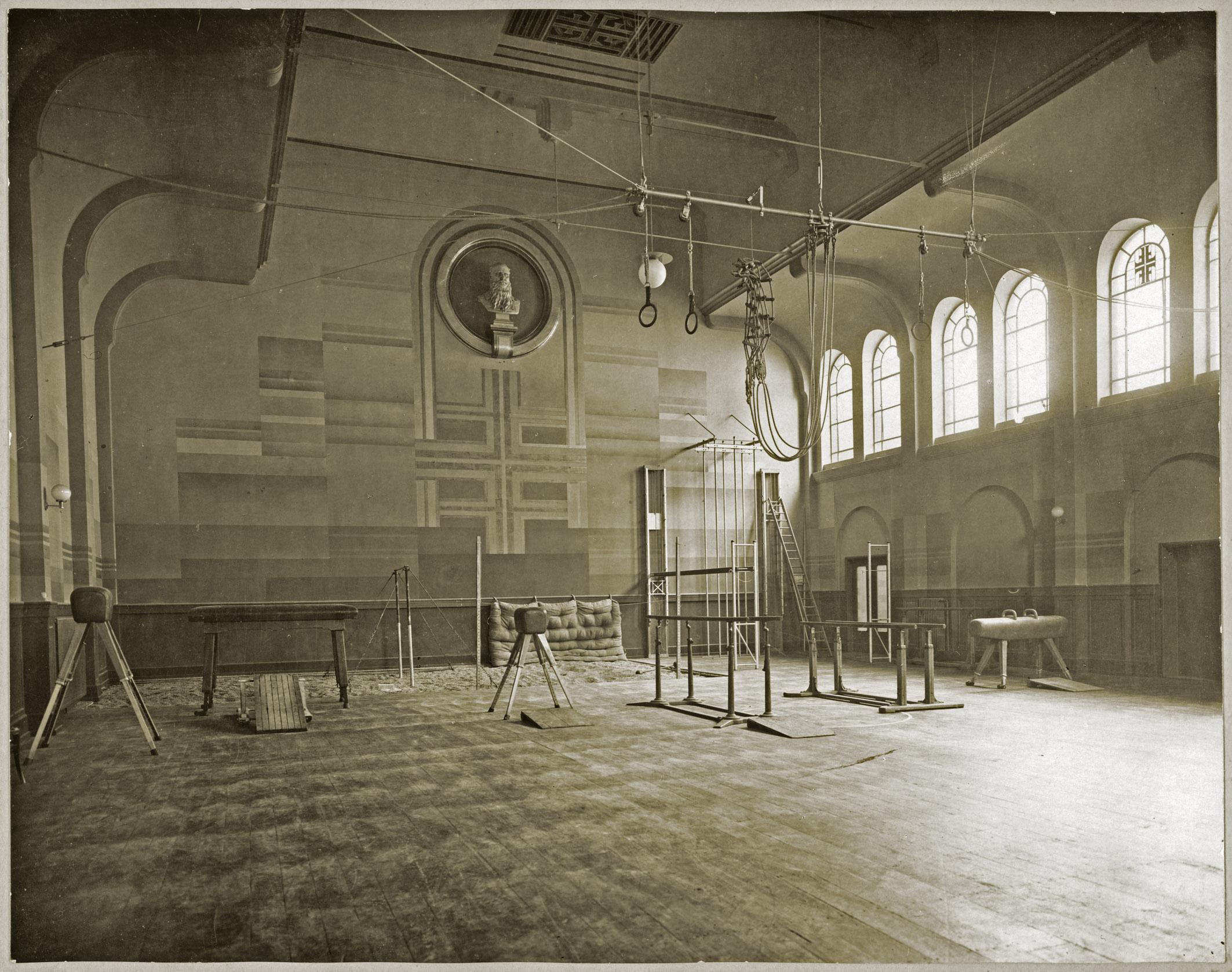


In addition, visitors will also learn that sack-jumping and tug-of-war were once Olympic disciplines and that the first gym in Baden-Württemberg was in the basement of a private home in Schwetzingen. The doping case of an Austrian cyclist from the 1950s illustrates the dark side of modern sports and exemplifies the possibilities and limits of physical self-optimisation. Sometimes with devastating health consequences for the athletes…
The Mannheim Museum also highlights how the trainer became a hip fashion accessory, and how fan chants and rituals developed in the football stadium. It is also worth noting that the mechanical lawnmower was originally invented in the 1830s in England. During this period, the then-popular lawn sports of the English aristocracy took place on green spaces that were extremely costly to maintain. Around 130 years later, artificial grass began its triumphal journey around the world as a durable, low-maintenance sports floor – the first artificial turf pitches were produced in the USA in the 1960s and 1970s.
Artificial sports turf: the first generation
Synthetic turf was originally made from polyamide fibres (PF); later on, other fibre raw materials were used. In order to optimise the shock absorption of these sports floors, the next step was to lay artificial turf on a flexible base – the elastic layer. This system is considered the first generation of artificial turf, which is still used for hockey pitches today.
Polytan presents 'Poligras Tokyo GT' hockey turf at the TECHNOSEUM
Polytan displays such a hockey turf at the Mannheim Technology Museum. And not just any turf, but a Poligras Tokyo GT in blue. It represents a new artificial grass system for hockey, which, as an official partner of the international hockey association FIH, Polytan has developed especially for the Tokyo 2020 Olympic Games. The defining features of this grass system: Even with the first-time use of renewable resources for the fibres, the hockey pitch’s surface is faster and more precise than ever before. Polytan also presents the new ‘PolyBase GT’ elastic layer in Mannheim, which is much more environmentally friendly than before thanks to a CO2-reduced production process. The letters ‘GT’ stand for Green Technology – the new Polytan label for environmentally friendly product developments, which can be seen in both the Poligras Tokyo GT artificial grass system and the PolyBase GT elastic layer.

Artificial sports turf: the second generation
The second generation of artificial turf arrived on the market at the end of the 1970s: In comparison to the first generation, the newer generation featured higher fibres (up to 50 mm) and was filled with quartz sand. This made it even easier to simulate a natural turf surface.
Artificial sports turf: the third generation
Since the 1990s until today, the third generation of artificial turf has been regarded as state of the art. These systems feature a lawn with approx. 40-mm-high fibres and an elastic layer, which is installed in situ. Today, turf features so-called monofilaments, which are made of high-quality polyethylene (PE). This artificial turf system is filled with sand (for weighting) and filling granules. Depending on the sport and the desired playing characteristics, as well as the care requirements, there are both different artificial turf system variants and different filling granulates available.
Polytan presents the 'LigaTurf Cross' turf system at TECHNOSEUM
LigaTurf Cross is the name of the modern synthetic football turf system that Polytan is exhibiting at the Mannheim Technology Museum. This system is made up of smooth and textured tufts – an exceptional mix, as artificial grass usually only features smooth or textured fibres. However, with this product development, Polytan has succeeded in combining the best of both worlds: While the textured fibres are more robust and lower maintenance, the smooth fibres support the football’s natural rolling behaviour. As an elastic layer with a 30-cm thickness, the innovative PolyBase GT is on display at the Museum of Technology. In addition to artificial grass for hockey, football, rugby and American football, tennis is also played on artificial grass. But this is not the rule – outdoor tennis courts are more commonly made of plastic.
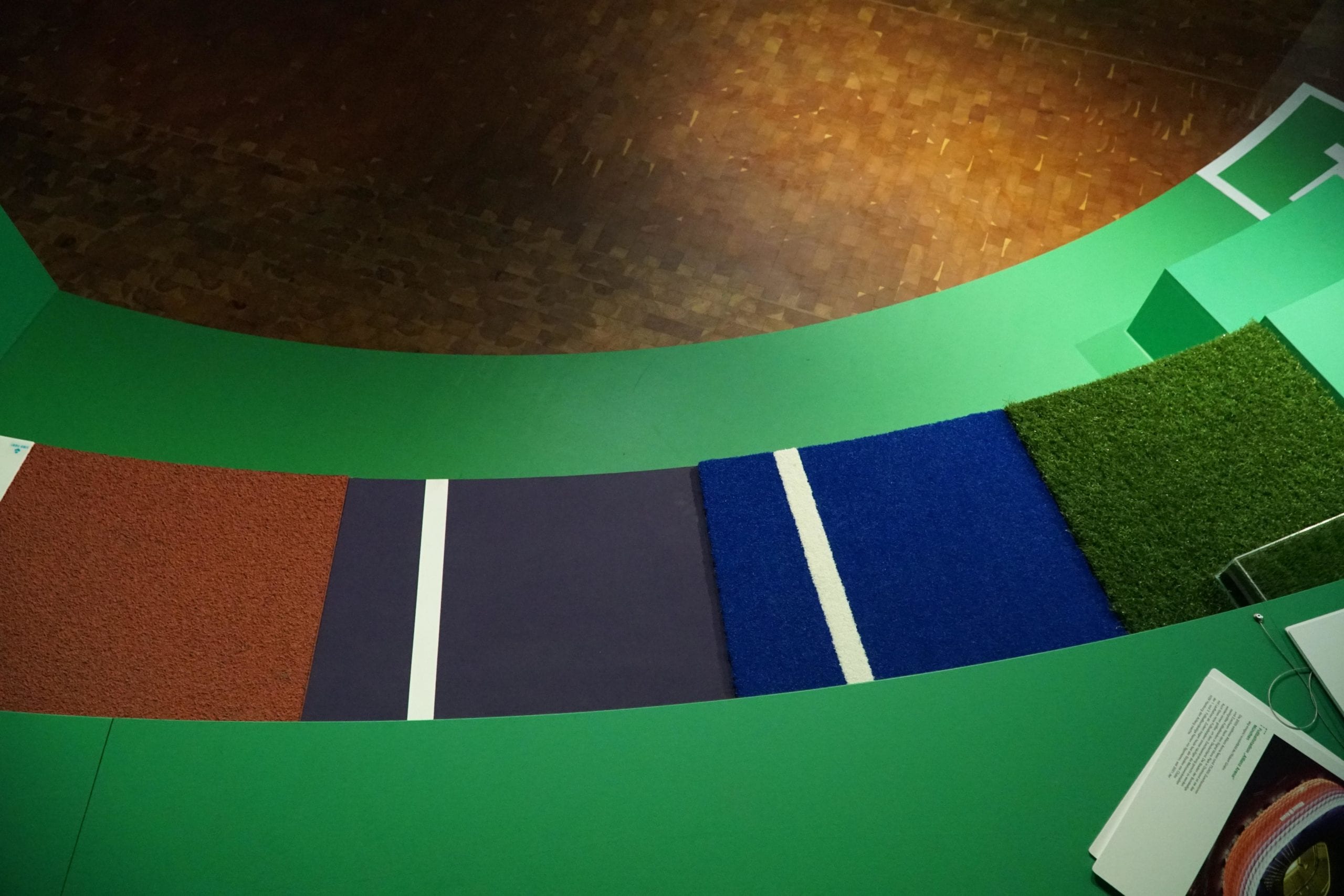
Polytan presents the 'Laykold Masters' tennis court system at TECHNOSEUM
As an exhibit for modern outdoor tennis courts, the TECHNOSEUM chose the Laykold Masters Color System from Polytan in royal purple. The sports floor consists of several thin plastic layers, which are made of acrylic polyurethane or rubber. This structure not only ensures good bouncing properties for tennis balls, but also ensures the hard floor coverings are long-lasting and UV-resistant.
Plastic Tartan tracks – on the road to success for 50 years
Track records, world records, world best performances – since 1970, all outstanding athletic achievements have been held exclusively on synthetic Tartan tracks. In 1968, the first synthetic tracks were installed in Europe. By 1972, the Munich Olympic Stadium was already equipped with them for the Olympic Games. The TECHNOSEUM demonstrates how modern synthetic tracks are constructed, using the ‘Rekortan M’ system by Polytan as an example.
Polytan presents 'Rekortan M' running tracks at TECHNOSEUM
Four world best performances, two national records, and ten meeting records were achieved in May 2016 at the IAAF Diamond League event at the Prince Moulay Abdellah Stadium in Rabat, Morocco, and all on newly installed Rekortan M tracks from Polytan. Such modern tracks, designed for the use of spikes, offer athletes excellent acceleration and tread elasticity. Their structure consists of various waterproof layers: an asphalt base layer, elastic levelling layer and a polyurethane surface layer.
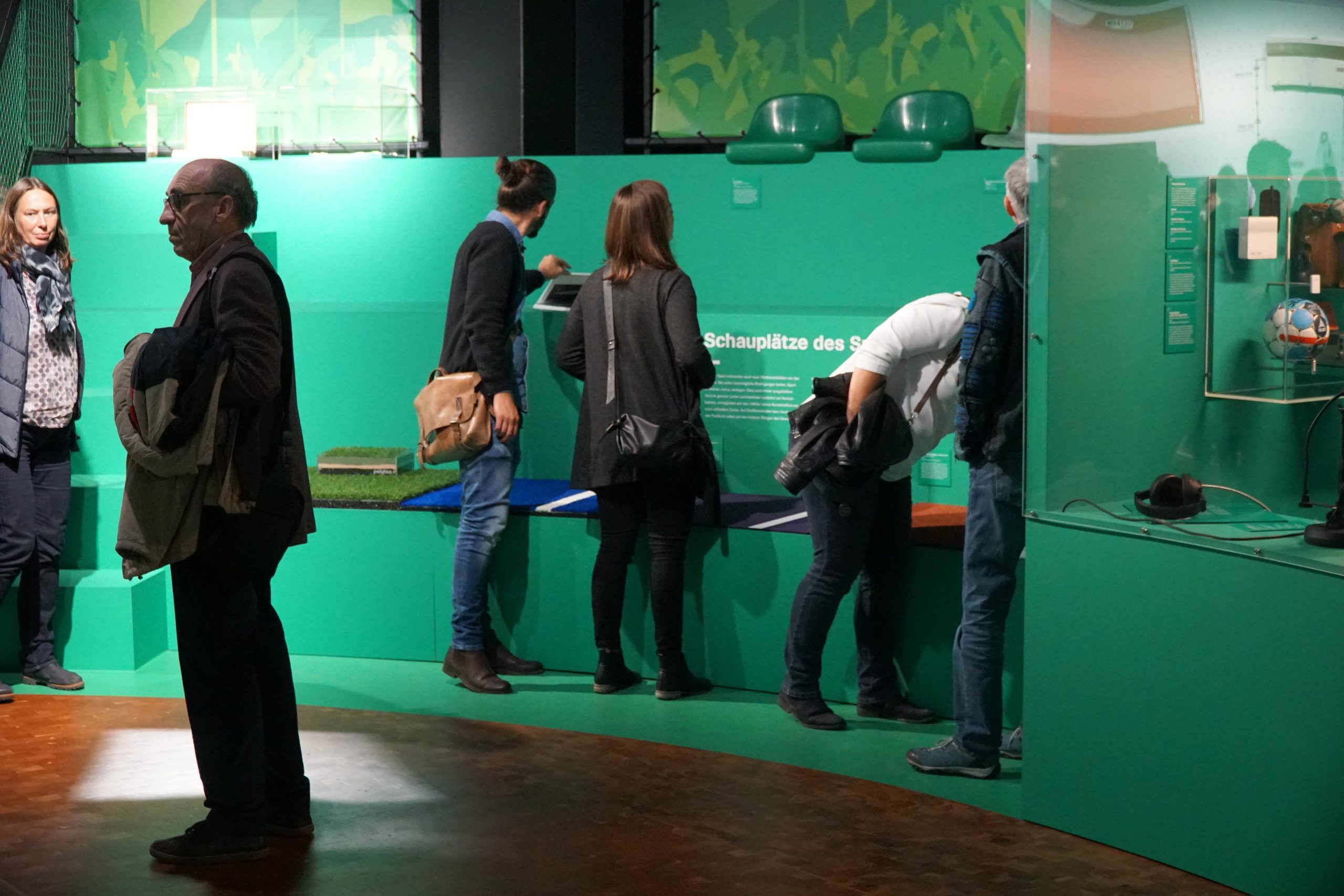
Experience sports history up close at TECHNOSEUM
Anyone who plays football, hockey, tennis or athletics today will come across the ubiquitous artificial grass pitches, plastic coverings and Tartan tracks in everyday life. Thus, they are an indispensable part of modern sport history – and therefore in the right place in this special exhibition, ‘READY? GO! The History of Sport and Technology’ at the TECHNOSEUM Mannheim.
Further information about the exhibition and the extensive complementary museum programme with lectures, guided tours and holiday programmes are available at www.technoseum.de.




